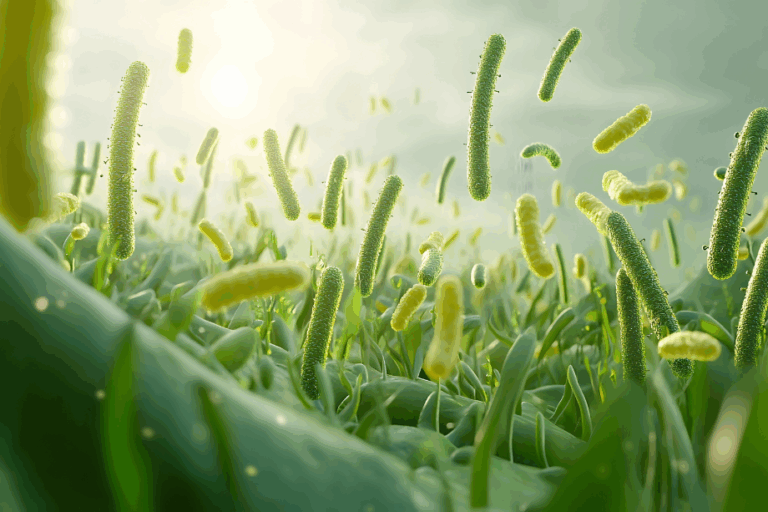Gerry: I am an avid follower of Gutbliss and was making and drinking green smoothies almost daily, then I began having intestinal issues, diarrhea etc. I ran across some experts talking about the dangers of ingesting too many foods high in oxalates. So, I’m confused. I’ve since given up eating spinach and Swiss chard and try to mostly eat vegetables and foods lower in oxalates, including fewer nuts and seeds. I’ve been eating more animal protein, pasture raised meats, eggs and dairy products. Now after many months my GI tract is returning to normal and I feel much better. How can it be that all these foods promoted as “health foods” are not good for everyone? I do want to add that I’ve been under an inordinate amount of stress that has probably put lots of strain on my whole body, but especially my GI system.
Dr. Chutkan: Gerry, first and foremost, I’m so glad to hear you’re feeling better. Second, thank you for this excellent question. Oxalate consumption is controversial, which you can easily discover during a quick internet search. As you point out, oxalic acid is found in some of the healthiest foods around, many of which form the basis of a plant-based diet. Examples of foods highest in oxalic acid include: beets, Swiss chard, spinach, kale, turnip greens, avocados, sweet potatoes, beans and legumes, berries, nuts and seeds, and dark chocolate (for an exhaustive list of oxalate content in foods, click here). While these are whole, nutrient-dense, plant-based foods (all receiving a two-thumbs up from us here at Gutbliss!), in some sensitive individuals, oxalates can be problematic. Let’s dig a little deeper.
What are oxalates?
For those who don’t know, oxalate refers to oxalic acid, an organic compound found in many plant foods (when metabolized, the body can also convert vitamin C to oxalate) that can bind to minerals (namely iron and calcium) in the body to form oxalate. This mineral binding occurs most often in the colon but can also occur in the kidneys and urinary tract. The compounds then exit the body in the urine and feces; they are not absorbed by the body. While the function of oxalates isn’t well understood, they may possibly act as a way of binding to and expelling toxins from the body. What we do know is that oxalates aren’t meant to be absorbed by the body.
What’s the problem with oxalates?
In some individuals, oxalates can accumulate and lead to kidney stones. Other concerns addressed in the scientific literature include oxalates’ associations with autism and vulvodynia (unexplained vaginal pain). Both of these conditions have anecdotal evidence linking them to oxalates, although a small set of studies show no causal link. More research is needed in these areas.
There is also anecdotal evidence linking oxalates to worsening gastrointestinal symptoms like bloating, gas, and abdominal pain, and GI conditions including inflammatory bowel disease (IBD), irritable bowel syndrome (IBS), and small intestinal bacterial overgrowth (SIBO). These anecdotal digestive concerns (as it sounds like you’ve experienced, Gerry), are hypothetically due to the fact that in those with increased intestinal permeability (or leaky gut – a condition linked to the above-mentioned digestive symptoms and conditions), more oxalates may be absorbed by the body and wreak havoc on the gut. Scientific studies show that those who suffer from recurrent kidney stones and inflammatory bowel disease have increased levels of absorbed dietary oxalates.
Who is at-risk?
At-risk individuals who may experience problems with a high oxalate diet include those:
- with increased intestinal permeability
- with inflammatory bowel disease, irritable bowel syndrome, and/or autoimmune diseases (these individuals typically have some form of leaky gut and microbial alterations that increase oxalate absorption)
- who have taken antibiotics: oxalates are digested by some forms of gut bacteria, including Oxalobacter formigenes, which utilizes oxalate as a food source and helps reduce the amount your body absorbs. Those who have taken antibiotics will experience a drastic reduction in this bacteria strain, and therefore, their bodies will absorb more oxalate than others.
- who suffer from recurrent kidney stones
- who have undergone gastric bypass surgery
If I have a problem with high oxalate foods, what should I do?
While a high oxalate diet is problematic for a very small percentage of the population, if you find that you feel better consuming a diet lower in oxalates, here are some things you can do to make sure you’re consuming enough plant-based foods to encourage microbial and overall health (since so many plant-based foods are high in oxalates):
- Stop consumption of the highest oxalate-containing foods for a period of time – Start with those that contain the most oxalates, including spinach, almonds, dark chocolate, beets, nuts, and nut butters. Implement this tactic for a period of time alongside the recommendations below. Once you’re feeling better, try and reintroduce these foods back into your diet slowly.
- Avoid taking antibiotics – Because of the link between a significant reduction of Oxalobacter formigenes and antibiotics, avoiding these medications can help your gut bacteria metabolize more oxalates and your body absorb less.
- Cook oxalate-containing foods – The process of cooking (and soaking) high oxalate foods like dark leafy greens, beans, gluten-free grains, and nuts, decreases their oxalic acid levels.
- Drink green tea – If kidney stones are your problem, research shows that green tea extract binds to calcium oxalate, changing the shape of the compound, reducing the amount of clumping, and inhibiting large kidney stone formation.
- Focus on improving your gut health – This will reduce intestinal permeability, optimize the gut microbiome, and deter the body from absorbing oxalates. And remember, this doesn’t just mean eat healthier. As you look to improve your gut health, keep in mind all the lifestyle practices that promote a balanced and thriving microbiome:
- Spending time outside
- Direct, skin-to-skin contact with nature
- Exercising daily
- Getting optimal sleep
- Reducing stress
- And of course, consuming whole foods high in indigestible plant fiber
While high oxalate diets may worsen already existing digestive symptoms in a small sub-set of the population, it’s important to not avoid high oxalate foods altogether, as they contribute large amounts of nutrients and microbes that promote health. Instead, use the above tips to help reduce your body’s oxalate absorption while still consuming some oxalate-containing foods.
In conclusion, Gerry, you mentioned the stress you’ve been experiencing and how that has had a direct impact on your gut. There is ample research that points to the gut-brain axis as a major player in digestive distress, and while oxalates may have been a big contributing factor in your symptoms, reducing stress will almost always improve what’s going on in your gut.







